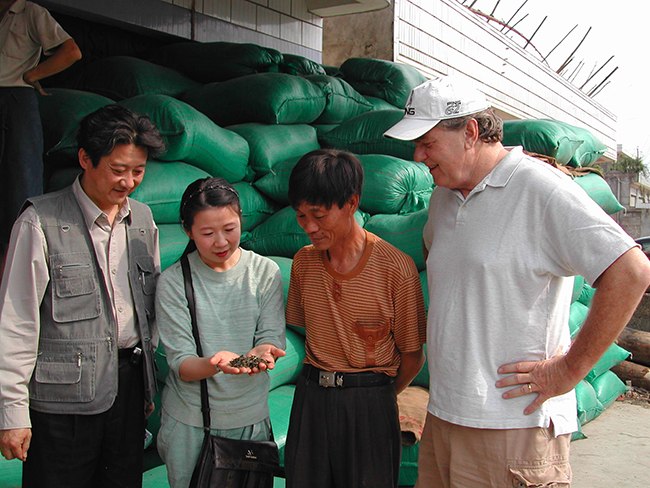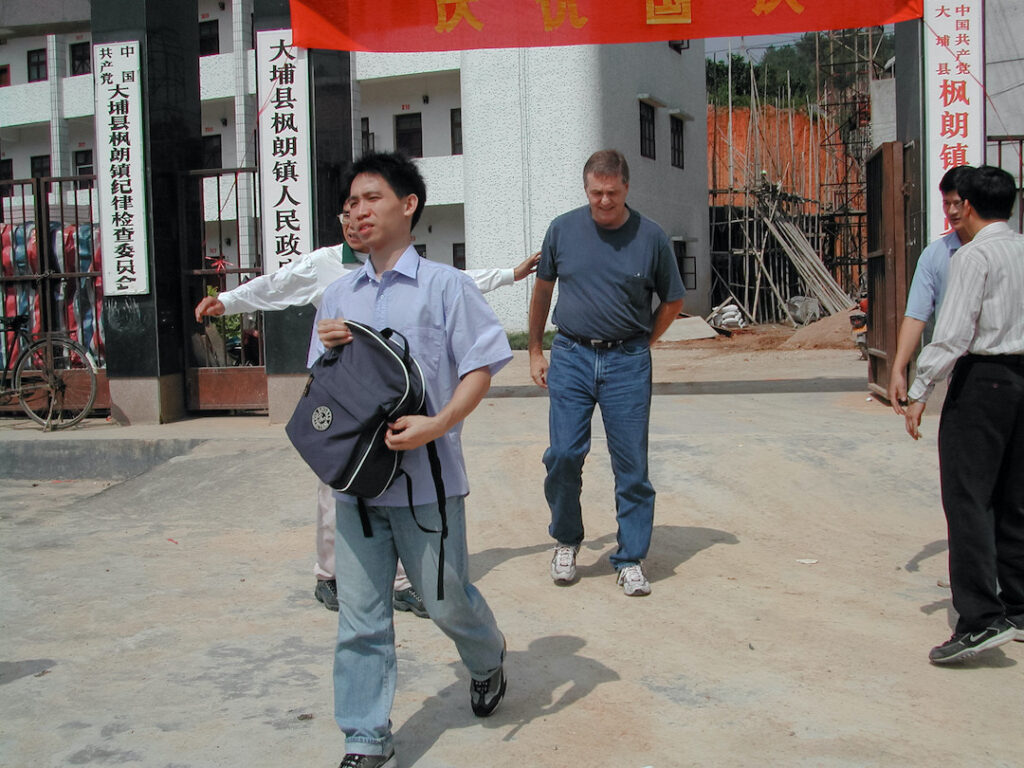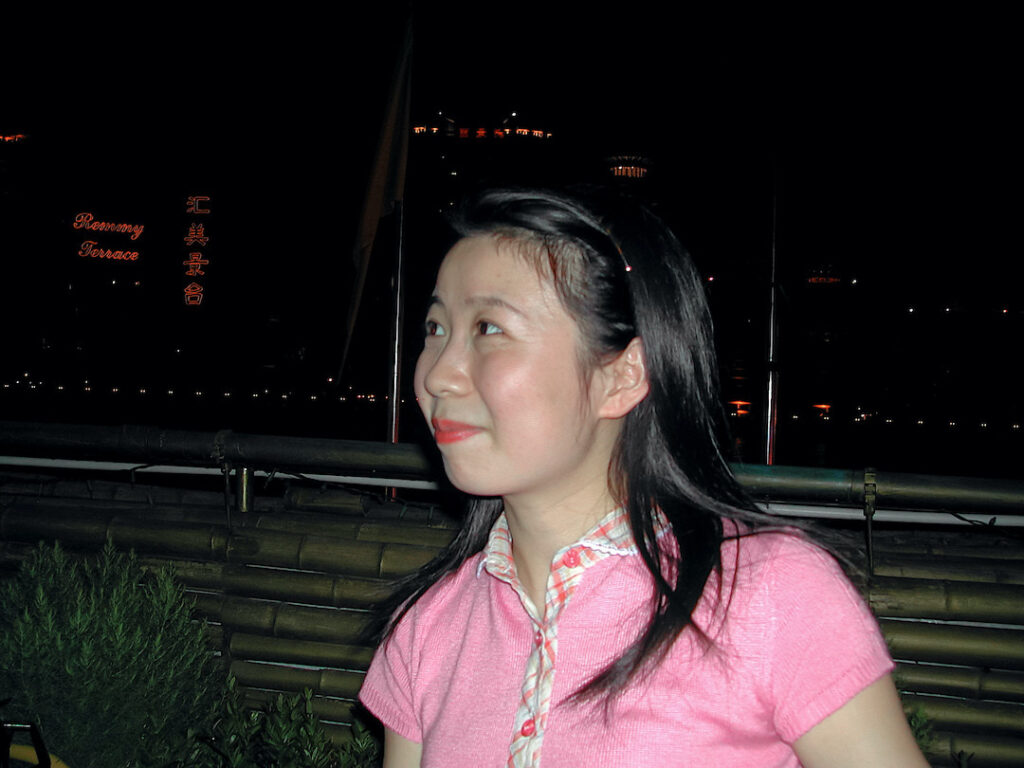
My first experience with puer tea came in an alley outside the Victoria Hotel on Shamian Island surrounded by the Pearl River in Guangzhou China on a fall morning in 2002. I had just registered my business in Tucson, Arizona and was in Guangzhou looking for tea. I was having dim sum. I was trying to figure out the best way to eat a chicken foot and the waiter dropped off a pot of puer tea that came with the meal.
I was more impressed with the chicken foot than the tea, and discovered if I bite through at a knuckle, I could get a manageable piece of the claw in my mouth to chew on. I had a sense of pride about my chicken feet skill, having had the responsibility of feeding vicious birds when I was a kid. That chicken would never peck a little kid again.
The tea had a bit of a barnyard note, but I made a mental note to put it on the list of teas I wanted to explore at the Fancun Wholesale market with Alick Lee after breakfast. Alick had been my interpreter even before I had considered tea as a business. He and my oldest son Josh had been to Yunnan the year before to help with another project that never panned out.
Travel to Yunnan was not encouraged for foreigners at the time, so we went with a Chinese tour group. We all wore orange baseball hats and followed a guide that had a flag the same color on a pole. We stayed at a hotel in Kunming that had a sign in the window that said “No Foreigners Allowed.” No one said a thing to us.
We searched all of the tea houses we could find in Kunming (by then I had been obsessed with tea for more than ten years) but I wasn’t looking for puer tea then because I had never heard of it. It just wasn’t on my radar. I had a Yunnan guide book that mentioned “Puer City” but there was no mention of the tea.
I did find a tent selling puer in the ancient city of Dali, and I bought some puer tea that was rolled up and dried in a ball about the size of a walnut. It was too bitter to drink.

Now, back to that day at the tea market in Guangzhou in 2002, I made it a point to search out puer. If they were serving it at the Victoria, something was going on that had evaded me in Yunnan, and that stuck a pin in my curiosity.
Alick and I looked at every seller in the market. We asked them all about puer. We found two sellers, one in a run down shop that stood alone in the middle of the market.
The other was in a new building that was yet to be occupied except for a corner store out front, tastefully decorated and operated by two tall twins with shaved heads.
There was a long bar for people to sit, and five or six young women in uniforms. One of the brothers stood and talked to customers, and the other brother was stationed at a tea table where a group of middle aged men that had a gangster vibe sat drinking tea. I bought a couple of cakes from the twins.
After we finished the tea shops we visited some other shops that sold tea related products. We met a man named Huang Yihuang. He was selling machines that would vacuum sell bags of tea. This was new technology. We sat down and talked about business. He was from southern Fujian and had an entrepreneurial streak. I talked about my ideas and wanting to base the Chinese side of my business in Guangzhou. He offered to help me by providing some warehouse space above his shop. I bought one of his machines, but it never worked because I couldn’t adapt it to American electricity. Nevertheless we became friends and still do business with his family.
He noticed my puer cakes and invited us to taste some puer in his new tea shop that evening.
This particular evening, Zhuping was taking me on a tour of various teahouses around town and the oddest tea house, if it could be called that, was Mr. Huang’s. His was one of the few that dealt with puer tea. This place was in a retail space on the ground floor of a new building. Though the outer wall was glass, we could not see inside. It looked like a big shop from the outside. To enter, we had to knock on a door in the middle of its strange opaque glass walls. It was like a speakeasy from the 1920s.

The inside didn’t look at all like a place of business at all. There were tables and chairs that were not arranged in any order or aesthetic. By no means were they enough to fill up this large retail space.
Mr. Huang’s family were from southern Fujian. He was himself an entrepreneur that pursued business opportunities like a Mississippi hound dog. The scent he was following was puer tea. There was a fortune to be made, he thought. Weirdly he was right. It didn’t make sense to me.
Zhuping, Alick, and I sat down with him at a table that we pulled up some chairs to. He made some shu puer for us, and he ran down the story to us about the inevitable market.
To my surprise after a couple of cups of tea prepared in a gaiwan, and poured into small cups, our host excused himself and went into a back room to retrieve some tea from a safe. “What kind of tea needs to be stored in a safe?” I thought.
We tasted some and while it was good, it was still a mystery why someone would want to steal it.
This clumsy scene would be our introduction to the puer market and a bubble that would last for around five years. Tens of millions of dollars would be gained and lost, and the collapse of the market would make the headlines of the Wall Street Journal. Even though it was cool to have been invited into the bubble, we did not invest in puer tea, though I do have a nice collection just by saving cakes we bought for our customers.
By the spring of 2007 every tea shop in the Guangzhou Tea Market was selling puer. Tragically, many of these sellers had bought their inventory at the top of the market.
Mr. Huang by that time had diversified into other businesses. His shop is still there run by his brother and deals in quality Yixing pot.
